Kurt Koontz's Blog, page 4
January 22, 2019
Presence
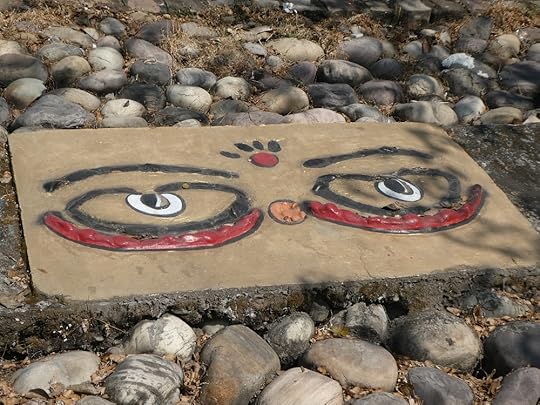
A friend of mine from Costa Rica posted this on Facebook. I have read the story many times and am totally guilty of too often offering unsolicited advice. Going forward, I plan to pay a little less.
The Gift of Presence, The Perils of Advice
BY
PARKER J. PALMER (@PARKERJPALMER), COLUMNIST
When my mother went into a nursing home not long before she died, my wife and I were told that, for a modest increase in the monthly fee, the staff would provide a few extra services to improve her quality of life. We gladly paid, grateful that we could afford it.
Now in our mid-seventies, my wife and I have no imminent need for assisted living or nursing care. But the house we live in is, by definition, a two-person residential facility for the aging. Here at what we fondly call The Home, it’s not uncommon for one of us to try “improve” the other’s quality of life by offering “extra services.” Unfortunately, those services often take the form of advice.
A few years ago, my wife gave me some advice that struck me as — how shall I say? — superfluous. Remembering our experience with my mother, I said, “Could I pay a little less this month?” To this day, that line gives us a chance to laugh instead of getting defensive when one of us attempts, as both of us do now and then, to give the other unsolicited and unwanted “help.”
Advice-giving comes naturally to our species, and is mostly done with good intent. But in my experience, the driver behind a lot of advice has as much to do with self-interest as interest in the other’s needs — and some advice can end up doing more harm than good.
Last week I got a call from a man who’d recently been diagnosed with terminal cancer. He’d emailed his bad news to a few family members and friends, one of whom had come over right away. “How are you feeling?” his friend asked. “Well, as I said in my email, I’m feeling amazingly at peace with all this. I’m not worried about what lies ahead.”
The friend replied, “Look, you need to get a second opinion. At the same time, you should start exploring complementary medicine. You should also sign up for a meditation program, and I know a good book that can get you started down that path.”
I asked my caller how that response had made him feel. “I’m sure my friend meant well,” he said, “but his advice left me less at peace.”
I told him I’d have felt the same way, and offered this image: Imagine that I need support with a serious problem, when along comes a guy with advanced CPR certification. He’s so eager to show off his skills that he isn’t able to hear my true need. Instead, he starts administering chest compressions and “rescue breathing,” even though I’m perfectly able to breathe for myself. Now I have another big problem as I try to fight off the “helper” who’s smothering me.
I asked my caller how he would have felt if his friend had simply said, “How great that you’re at peace! Tell me more.” “That would have been wonderful,” he replied. “But everyone I talked to had advice for me, including a relative who said I needed to join her church before it was too late.”
I asked how he’d been feeling recently — he said he’d been feeling afraid. “Do you want to talk about your fear?”, I asked. He talked while I listened and asked a few more questions. When we were done, he told me that some measure of peace had returned. It was a peace that had come from within him, not from anything I’d said. I’d simply helped clear some rubble that blocked his access to his own soul.
My misgivings about advice began with my first experience of clinical depression thirty-five years ago. The people who tried to support me had good intentions. But, for the most part, what they did left me feeling more depressed.
Some went for the nature cure: “Why don’t you get outside and enjoy the sunshine and fresh air? Everything is blooming and it’s such a beautiful day!” When you’re depressed, you know intellectually that it’s beautiful out there. But you can’t feel a bit of that beauty because your feelings are dead — and being reminded of that gap is depressing.
Other would-be helpers tried to spruce up my self-image: “Why so down on yourself? You’ve helped so many people.” But when you’re depressed, the only voice you can hear is one that tells you that you’re a worthless fraud. Those compliments deepened my depression by making me feel that I’d defrauded yet another person: “If he knew what a worm I am, he’d never speak to me again.”
Here’s the deal. The human soul doesn’t want to be advised or fixed or saved. It simply wants to be witnessed — to be seen, heard and companioned exactly as it is. When we make that kind of deep bow to the soul of a suffering person, our respect reinforces the soul’s healing resources, the only resources that can help the sufferer make it through.
Aye, there’s the rub. Many of us “helper” types are as much or more concerned with being seen as good helpers as we are with serving the soul-deep needs of the person who needs help. Witnessing and companioning take time and patience, which we often lack — especially when we’re in the presence of suffering so painful we can barely stand to be there, as if we were in danger of catching a contagious disease. We want to apply our “fix,” then cut and run, figuring we’ve done the best we can to “save” the other person.
During my depression, there was one friend who truly helped. With my permission, Bill came to my house every day around 4:00 PM, sat me down in an easy chair, and massaged my feet. He rarely said a word. But somehow he found the one place in my body where I could feel a sense of connection with another person, relieving my awful sense of isolation while bearing silent witness to my condition.
By offering me this quiet companionship for a couple of months, day in and day out, Bill helped save my life. Unafraid to accompany me in my suffering, he made me less afraid of myself. He was present — simply and fully present — in the same way one needs to be at the bedside of a dying person.
It’s at such a bedside where we finally learn that we have no “fix” or “save” to offer those who suffer deeply. And yet, we have something better: our gift of self in the form of personal presence and attention, the kind that invites the other’s soul to show up. As Mary Oliver has written:
“This is the first, the wildest and the wisest thing I know: that the soul exists and is built entirely out of attentiveness.”
I leave you with two pieces of advice — a flagrant self-contradiction for which my only defense is Emerson’s dictum that “consistency is the hobgoblin of little minds.” (1) Don’t give advice, unless someone insists. Instead, be fully present, listen deeply, and ask the kind of questions that give the other a chance to express more of his or her own truth, whatever it may be. (2) If you find yourself receiving unwanted advice from someone close to you, smile and ask politely if you can pay a little less this month.
January 15, 2019
Intuitive Living
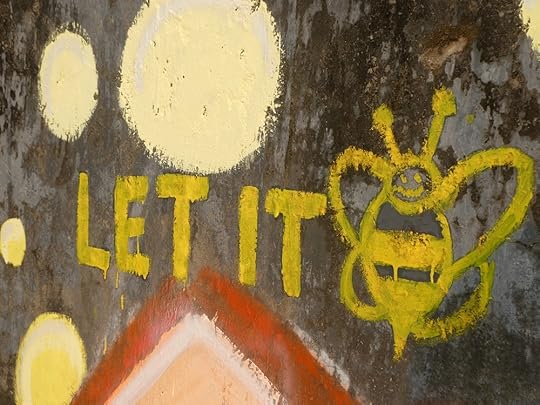
Bill Bennett is a dear friend of mine from Australia. We have followed each others footsteps around this planet and shared some nice experiences. He intuitively made a documentary about intuition and followed up with a book to compliment the film. You can find information on this link: PGS The Movie. I love people that live a life guided by the heart.
PGS Book Excerpt:
The film industry is largely skeptical of matters metaphysical, and certainly it’s not necessarily a good career move to come out publicly and state that you are actively following a spiritual path. Funders and studio execs and Government financing bureaucrats tend to think you’ve turned weird or whacky, and maybe you can’t be trusted anymore with large sums of money, that you’re no longer a responsible sane thinking movie professional.
And behind your back they laugh at you.
And sometimes to your face as well.
But mostly behind your back.
I knew that would happen when I was considering making the film on intuition. I knew it would be damaging to my career, and that I would possibly lose the respect that had taken nearly forty years of my working life to accumulate. I knew I would lose friends, both professional and personal – and in fact all of that has happened.
And you know what?
I don’t care!
Because what I’ve gained has more than made up for what I’ve lost. Many times over.
The friends I’ve lost – and I have lost friends – were never my true friends, I guess, because they couldn’t handle my changing. They wanted me to be who I used to be, which was at times a wild, profane, outrageous person. I’m not that now. I try to be humble, grateful, and compassionate. They think that’s boring.
Basically, those friends that dropped off wanted to revel in the past. They wanted to keep me in the past. They are moribund in the alleged good times of long ago. They haven’t changed. They don’t believe they can change. And consequently they don’t believe that I could have changed. Not really. And probably they’re suspicious – either that this is all an act, or that I’ve turned into a “God-botherer,” as they say in Australia. It’s a term used to describe someone who tries to force their religious faith onto others.
Sorry guys, I’m not a God-botherer.
I’ve just moved on.
And you know what?
It’s not boring.
Actually, I’m having more fun now than I’ve ever had. And I’ve gained more friends than I’ve lost, many times over. These friends are people that I can sit and talk to, and laugh with, for hours. I found that I could no longer talk to the friends I had before. I had nothing in common with them anymore.
Their interests were no longer my interests. What they found funny, often based on denigrating others, I no longer found funny. I refused to join in when they gossiped. I found it boring when they talked real estate and the pros and cons of a Mercedes versus a BMW. I just wasn’t interested.
January 8, 2019
Decimating Fear
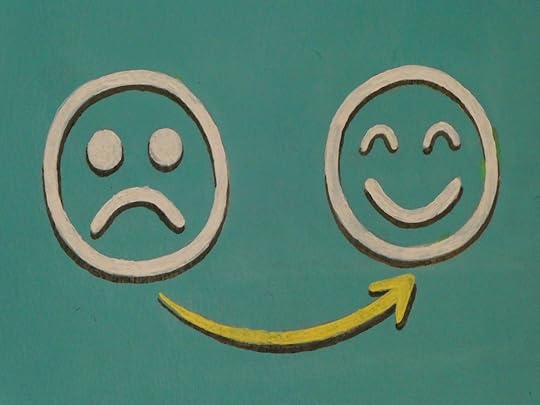
Last Friday, I had lunch with an incredible friend that has influenced my life for over thirty years. She is a kindred soul and we are constantly teaching each other by sharing life experiences.
Like most of us, fear has prevented her from pursuing many of her dreams. Prudence and caution have served her well, but sometimes she tends to cling to safety. She is always fully stocked on the shortest of road trips with extra food, water, and at least two sets of road flares. Just in case…
I bumped into her at a yoga class a few months ago and she had some huge news. A very expensive home repair had her questioning a current living situation. With one daughter away at college and the second daughter poised to flee the coop, she realized that she had way too much space and the cost was likely to weigh her down as a soon-to-be empty nester. On the same day, she was going to take the first baby steps by visiting some open houses in a nearby development.
When she walked into the first townhouse on her list, her heart went into overdrive mode. Within minutes of crossing the threshold, she signed a non-contingent full price offer. She followed her intuition and made the leap. Over the next 45 days, it all worked out with amazing synchronicity. Her realtor quickly sold the existing house, she completed the mega-purge, closed the new home without a hiccup, and smoothly moved into the new digs. Knowing her as I do, this is like spending a lifetime in the shallow end and then and then skinny dipping at the mid-day company pool party.
Throughout the meal I witnessed a glow that had been previously smothered by years of stressful living in fear. Her “rip the band-aid” approach to this move completely changed her life. Her only regret was waiting so many years to finally take the leap. By taking such a big dive into the ocean of fear and emerging victorious, her confidence is righteously overflowing. She said, “Fear and happiness just cannot coexist in the same room. To make space for the happiness, I decimated the fear. What used to look like a black diamond ski run is now a bunny hill.”
I have always felt that she was unstoppable. With a lighter load, I think she agrees. It will be so much fun to watch her blaze a new path.
January 1, 2019
Contemplating 2019
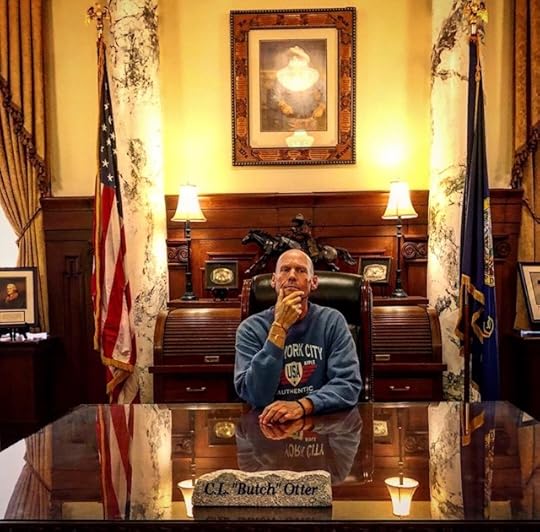
Most years I dust off old resolutions, try them on for a few months, and shelve them for another year. This year, I am breaking old habits and searching for new sources of inspiration. I hope you will find some new ideas from these incredible speakers.
Thank you for being long term and loyal readers of my blogs. I am lucky and honored to be your friend. I hope 2019 is filled with light and love.
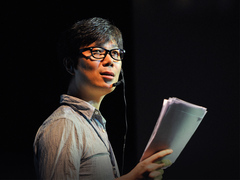 Young-ha Kim: Be an artist, right now!
Young-ha Kim: Be an artist, right now!Resolution #1: Make time to make art.
From the talk: Young-ha Kim’s “Be an artist, right now!”
“There are hundreds of reasons why we can’t be artists right now,” says Korean author Young-ha Kim—that is, all the reasons we invent when we’re too scared or intimidated. But, Kim reminds us, “We are all born artists.” Unleash those suppressed artistic impulses: take an acting class, buy some paint, or just sit with a notebook and write like crazy.
 Amy Webb: How I hacked online dating
Amy Webb: How I hacked online datingResolution #2: Take charge of your love life.
From the talk: Amy Webb’s “How I hacked online dating“
Amy Webb finds the saying “true love will find you when you least expect it” nonsensical. Why wait around rather than go after what you want? In her own search for a husband, Webb tossed this saying out the window and approached online dating with a data-driven strategy—and a clear goal. She got it.
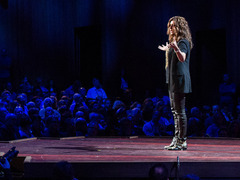 Nilofer Merchant: Got a meeting? Take a walk
Nilofer Merchant: Got a meeting? Take a walkResolution #3: Walk more, sit less.
From the talk: Nilofer Merchant’s “Got a meeting? Take a walk”
We sit even more than we sleep, and it’s terrible for our health. So for 2014, make a commitment to getting up: schedule walking meetings and get-togethers, use a treadmill desk, or work standing up. At least part of the time.
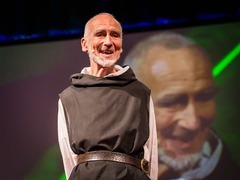 David Steindl-Rast: Want to be happy? Be grateful
David Steindl-Rast: Want to be happy? Be grateful
Resolution #4: Practice gratefulness daily.
From the talk: David Steindl-Rast’s “Want to be happy? Be grateful”
Benedictine monk David Steindl-Rast explains that gratefulness is our path to happiness, and that all it takes is a shift in perspective: stop what you’re doing, open yourself up to the opportunities around you, and act on them. Do this as much as you can, even if it means writing yourself reminders and posting them all over your apartment.
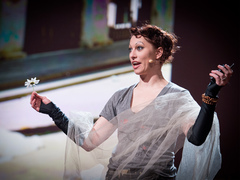 Amanda Palmer: The art of asking
Amanda Palmer: The art of askingResolution #5: Ask for what you want.
From the talk: Amanda Palmer’s “The art of asking”
In a talk about her career as an alt-rock performer, Palmer describes the community of fans she’s created by asking for favors, and how much of her career rests on this simple act. You won’t get everything you ask for, of course—but you won’t get anything you don’t ask for.
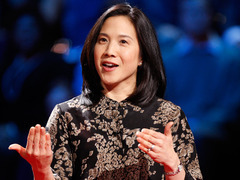 Angela Lee Duckworth: Grit: The power of passion and perseverance
Angela Lee Duckworth: Grit: The power of passion and perseveranceResolution #6: Allow yourself time to meet your goals.
From the talk: Angela Lee Duckworth’s “The key to success? Grit”
“Grit is passion and perseverance for very long-term goals,” psychologist Angela Lee Duckworth says. “Grit is living life like a marathon, not a sprint.” Grit is also essential for success. If you expect to meet your goals immediately and give up when you don’t, you’ll probably be giving up a lot. But if you expect setbacks and can give your goals some breathing room, you have a much better shot.
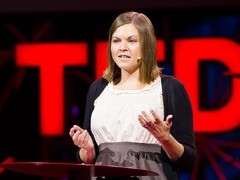 Karen Thompson Walker: What fear can teach us
Karen Thompson Walker: What fear can teach usResolution #7: See your fears as an act of the imagination.
From the talk: Karen Thompson Walker’s “What fear can teach us”
David Steindl-Rast (see Resolution #4) says everything is an opportunity. Fear is no exception. In this talk, novelist Karen Thompson Walker explains that fear doesn’t need to be something we conquer and fight. “What if we thought of fear as an amazing act of the imagination?” she asks. To fear something, we have to first create it in our minds, out of nothing—that is, fear involves writing a story.
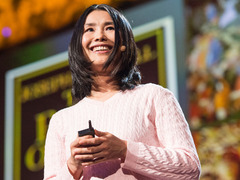 Lisa Bu: How books can open your mind
Lisa Bu: How books can open your mindResolution #8: Read books that challenge your perspective and beliefs.
From the talk: Lisa Bu’s “How books can open your mind”
Lisa Bu explains the huge shift in perspective that reading prompted, and explains books’ formative role in her life. “Books have given me a magic portal to connect with people from the past and present,” she says. Don’t just stick to what you know: read outside the box.
 Kelly McGonigal: How to make stress your friend
Kelly McGonigal: How to make stress your friendResolution #9: Make your stress work for you instead of against you.
From the talk: Kelly McGonigal’s “How to make stress your friend”
Psychologist Kelly McGonigal explains that it isn’t stress itself that’s bad for you—it’s believing that stress is bad for you. Reframing your stress as helpful for your performance actually changes your physiological response.
 Abha Dawesar: Life in the “digital now”
Abha Dawesar: Life in the “digital now”Resolution #10: Take breaks from your devices.
From the talk: Abha Dawesar’s “Life in the ‘digital now”‘”
“Our full sense of self needs both immersive experience and the flow of time,” says novelist Abha Dawesar. The digital world, she argues, removes us from that and chops time into bits to be archived. But we can choose to live otherwise, to live in the real, undigitized world — at least sometimes — and let ourselves be truly present. “We can choose those moments that restore the flow of time instead of fragmenting it,” Dawesar says. “We can slow down and we can tune into the ebb and flow of time. We can choose to take time back.”
December 25, 2018
Getting Stuff

As a child in grade school, Christmas was all about getting stuff. For many days leading up to the Christmas I counted the number of packages under the tree, fantasized about the contents, and knew that happiness was contained in one of those boxes. On the first day of school in January, it was common to start a conversation by asking, “What did you get for Christmas?”
With the passage of years, I was still in a position wanting things. I wanted to get more money, wanted to get the girl, wanted to get higher by imbibing whiskey. I wanted to get the promotion, wanted to get new counters, and wanted to get cooler clothes. Throughout life, I was always chasing something that was just out of grasp. It stemmed from a feeling of not being whole. Surely there was a person, an experience, or a thing that would complete me.
After a lifetime of trial and error, in 2015 I walked my second Camino in Spain. There is an iron cross called the Cruz de Ferro. Pilgrims brings a stone from their home and the idea is to leave the rock behind along with something that needs to be purged from life. I took a stone from the creek behind my home and left the illusion that any person, thing, or trip would ever make me whole, because I will never be more whole that I am in the current moment.
The game of chasing and getting stuff has no end-zone where a touchdown can be scored. The field gets longer, the goalposts move, and continuous loss builds resentment. Nothing is more painful that being thirsty and realizing the mirage is a mirage.
If having stuff created happiness there would be no substance abuse or divorce in Hollywood.
We all have some type of abundance in our lives. It may be knowledge, money, time, or experience. I have found that my happiest times come from giving freely with the intention of helping others.
This ancient Chinese proverb provides a nice summary.
If you want happiness for an hour, take a nap.
If you want happiness for a day, go fishing.
If you want happiness for a month, get married.
If you want happiness for a year, inherit a fortune.
If you want happiness for a lifetime, help somebody else.
Happy Holidays!!
December 18, 2018
Expectations
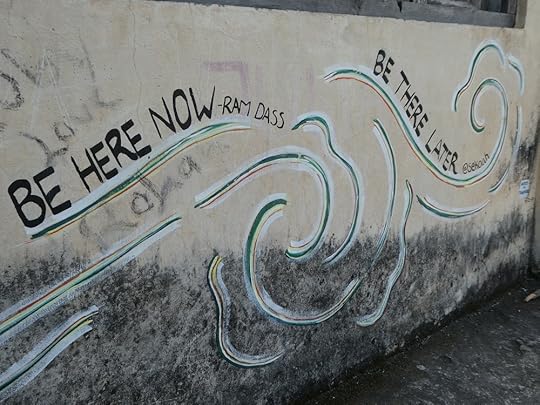
I hope you will enjoy another sample chapter from Practice.
When I am preparing to travel, friends often ask me, “Are you excited about your trip? What are you going to do when you get there?” Most of my trips are for at least a month, so these are logical questions that are always asked with good intentions. Unfortunately, such questions totally miss the mark of any journey.
Excitement requires attention to be subtracted from the current moment. It also sets the hook for an attachment to a future event that may or may not happen.
Prior to going to India for my third trip, I knew that I would live in the ashram for 10 days, then move to the yoga shala and take a teacher training that would last a month. I was also hopeful that I would reconnect with friends from my previous visits to the area. I did have one massage booked prior to arrival, but beyond that, I did not set any type of expectations about what would or would not happen.
I would have found it easy to fantasize or daydream about things that might happen. I could have imagined myself meeting my soulmate in the training and falling deeply in love. I could have envisioned a spiritual awakening wherein all my mortal problems would dissipate into space and be replaced with eternal bliss. Given the anticipated level of yoga practice and diet change, it would have been quite logical to imagine some type of transformation in my body. Perhaps six-pack abs?
In each one of these examples, certain expectations could be set. Would my new love be tall? Would I float back home on a magic carpet? Would AARP Magazine want to feature me for the “Abs over 50” issue? Allowing these ridiculous thoughts to gain traction might set a high-water mark that could either be met or not. If not met, would I equate that to failure? If met, would I wonder if I could have done even better?
Yoga teaches a person acceptance. I have learned to enter each practice with the intention of always doing my best to stay in the moment and to achieve stillness in my mind. This intention is extremely different from walking into class with the attitude that today is the day I will hold dancer pose for 90 seconds and my form will be perfect. Again, a ridiculous expectation is established, and judgment comes into play about results that are better or worse than the preconceived notion.
My trips typically begin with flights, which are usually a wonderful place to test acceptance. It is never a clever idea to walk down the jetway with thoughts of being upgraded to first class, of being seated next to fascinating people, of arriving early to a destination. Life is much more interesting when I accept a delayed flight as the universe telling me that I have another purpose in that moment. In my younger days, I would take a delay as a conscious effort on behalf of the CEO of Delta Airlines to purposely ruin my day.
What I do take on every trip now is an intention to be very open to accepting what happens, to letting each day unfold. The best memories of my life always come from the unexpected synchronicities that make each day richer. If coincident events are not happening to me with regularity, the universe is telling me that I am on the wrong path—a cosmic hint to shift gears and change lanes.
December 11, 2018
Transitions
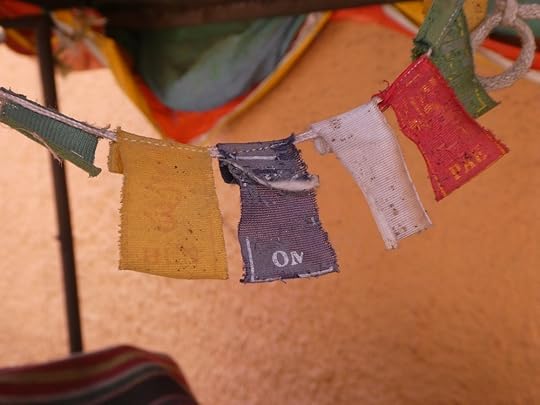
As I was preparing to leave India, one of my friends sent a message wishing me safe travels. He also asked, “It is more difficult to return from your journey to India or the long walk in Spain?”
This simple question scratched the surface of a much deeper state of my mind. Ready or not, transitions are a fact of life. Trips begin and trips end. We grow older, graduate, get married, switch jobs, change relationships, and evolve. Some are by choice and others are quite dramatic and unexpected. These periods of time between events are the awkward emotional spaces where ties are cut from the known before settling into what is new.
While cliche, the idea of one door needing to close before the new one opens seems to fit my nomadic lifestyle. Acknowledging the closed door is healthy; staring at it is not. Surinder seems to simplify this by saying, “If we were meant to look backwards our eyes would be on the back of the heads.” While I like this analogy, looking to far into the future can also create turmoil.
I find the best way to navigate the constant transition is to be very attached to the current moment and accepting it with gratitude. The long trip home is a very good example of acceptance. It takes 36 hours from the time I leave Rishikesh until I land in Boise. 23 of those hours are in the air. Resisting the flights, wishing I was not there, and wanting to be somewhere else does not enhance the experience or make the time go faster. Relaxing with a book, enjoying a movie, and catching a few zzz’s makes the long flights much more enjoyable. Travel is a luxury not a burden.
Life is always better where I am. Not where I was or may be going.
December 3, 2018
Bendable
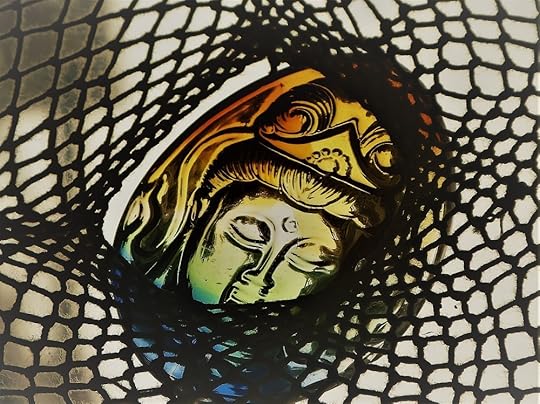
My yoga journey began about five years ago. Like many people, I though this type of exercise would dramatically improve my flexibility. There is no question that flexibility is needed to relax into a pose. Any type of bending or conforming is impossible with stiffness. In the early days of my practice, I had no idea that a flexible spine could ignite the same in my heart and mind.
The other day in class, Surinder helped to explain the process by sharing a few stories. He suggested that if we are hard and rigid on the inside then our exterior actions reflect the stiffness. Flexibility adds to interior softness. With a softer heart and open mind, we are more capable of experiencing the unknown, letting go of attachments, and sharing experiences.
He continued by saying, “How do we make an impression on a hard surface?” The class agreed that a line could only be drawn on a marble slab with force. Imagine creating that impression with a diamond. The scratched surface is hard to create and almost impossible to remove. Using a similar metaphor, he continued, “Now try to imagine drawing a line in sand and watching it disappear with the next wave.” He suggested that going through life as a slab of marble means never being open to anything and also never letting go of any history. We all decided that life is better in soft sand.
He continued with a story about the beauty of water. In a liquid form, it flows brilliantly and conforms to any container. In a solid form, ice conforms one time and then maintains stiffness. When ice is shattered the edges are sharp and cool to the touch. With a bit of heat, softness returns and the flow resumes. With lots of heat, it levitates.
Yoga teaches us to be flexible and resilient. To smoothly bounce back from the chaos of life. It teaches us that when we quit resisting, and simply submit our bodies into a posture, this is how we can increase our flexibility. Much like when we resist something in life, it persists; and the moment we submit to life’s challenges, it opens up a new door of opportunities.
How do you become more flexible on the mat? Practice.
How do you become more flexible off the mat? Practice.
What book should you read? Practice.
November 26, 2018
T-Day

Last Thursday, I woke up feeling a little blue about being 7,000 miles away from my family. I decided to use the negative feelings as a source of energy for a long walk into the main market of Rishikesh. My mission on that particular day was to practice gratitude and to be thankful.
On most mornings, strong winds blow from the Himalayas and the cooler air keeps the early morning crowds off the streets. About a quarter of a mile from my hotel, I ran into a local Indian man squatting in front of a public water spigot. Using some cold water accumulated in a small canister, he opened his dhoti (rectangular cloth draped around the waist and legs) and began to clean his body.
Another mile down the road, I passed a group of workers mixing sand and gravel to create concrete. They were constructing a retaining wall near a small section of the river boardwalk. At my home, the cement truck arrives and the sludge slides down a huge slide into the desired spot. At this site, a merry-go-round of men and women carry buckets of sand and rocks on their heads to be poured into the mixer. I sat spellbound for about 20 minutes just taking in this process.
Across the bridge and near the river cremation site, a large group of women were washing their clothes by hand in The Ganges. With arms extended above the heads, their long rectangular wraps flap like flags. From afar it looks like a colorful ceremony but in reality, they are using the stiff breeze to dry their garments by hand.
Much further down the road, I began thinking of one of my best friends in Boise. Many moons ago, he was injured in a crash and lost an arm and a leg. He does have a prosthetic leg, but walking long distances is not an easy task. Using my mobile, I video called him and took him on a twenty minute walk along the river. Because of the noise, we did not talk during the walking time. It was nice to be connected with a bestie in this manner. At the very end he said, “Dude, it felt like I was in a James Bond Movie.”
That evening one of my local Indian friends invited me to dine with his family. It was my forth trip in as many years to his home. Instead of turkey and stuffing, we enjoyed rice, dal, and radishes drizzled with homemade hot chili sauce. An endless supply of chipati (Indian flatbread) accompanied the piles of food. One of the sons, Vishal, works as a jeweler making gold rings that are exported to the US. He works six days a week and ten hours a day. He is paid around $275 per month.
Before going to bed, I was able to call my mom and wished her a Happy T-Day. India is 12 hours ahead, so my goodnight was her good morning. There was no shortage of gratitude as I drifted to sleep.
November 19, 2018
Silence

Most yoga classes end with the shavanasa pose. In this posture, practitioners lie flat on their backs with the heels spread as wide as the yoga mat, arms a few inches away from the body, and palms facing upwards. Surinder always encourages us to relax into our bodies, enjoy the silence, and feel the stillness. At the conclusion of the practice, he shares a spiritual story. This is a summation of his story from last Thursday.
He began by asking this rhetorical question, “Why is silence so important in our lives?”
His next question was, “How do we measure the health of a tree?”
Many of the students began to give random answers and we eventually agreed that the health of a tree can be seen in the trunk, the leaves, and the limbs. He quickly reminded us that while these are all good answers, the source of health is the deep roots of the tree. Without deep and grounded roots, nothing exists above the surface.
Continuing with the quizzes, he asked, “How do we measure the calmness of a river?” We could not get this one so he explained that surface level calmness is a reflection of depth. Without depth, water is agitated and jumpy as it flows through constricted paths.
Continuing with the metaphors, he said, “By nature, our minds are always running. Running to the future or digesting the past. By nature, we are all good at talking but we only learn through listening. By practicing silence and meditation, we can go below the surface and connect to our true nature at a much deeper level. The depth or lack of depth in that connection is reflected in our daily actions.”
To cleanse, many yogis occasionally fast because it is a sure way to remove impurities. Silence is fasting for the mind.



